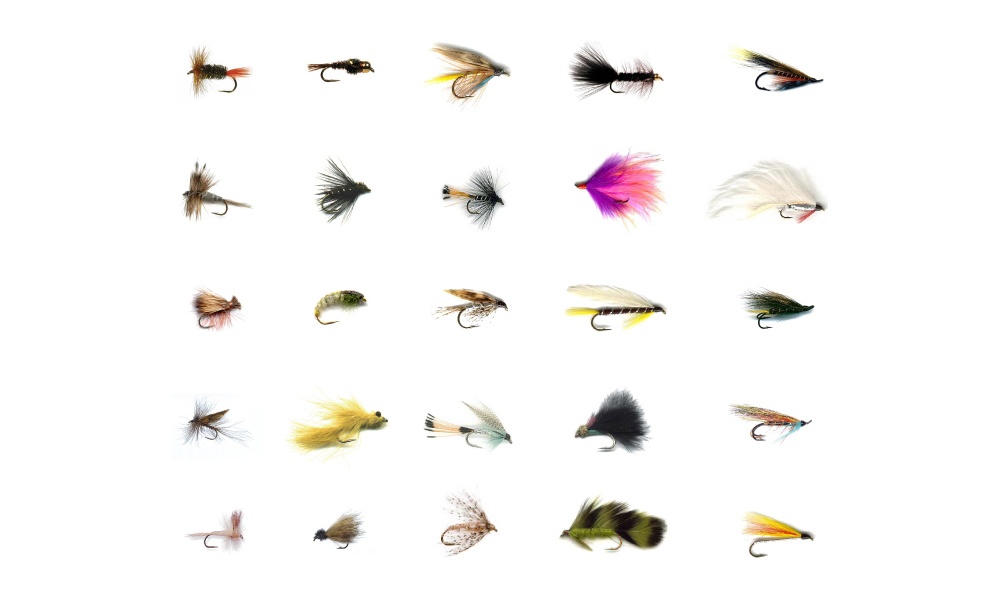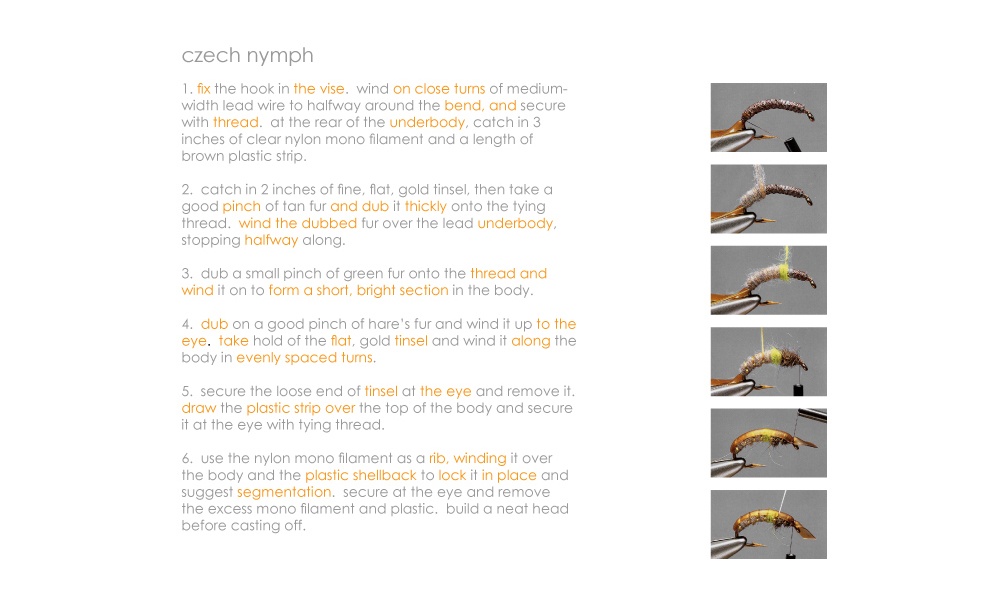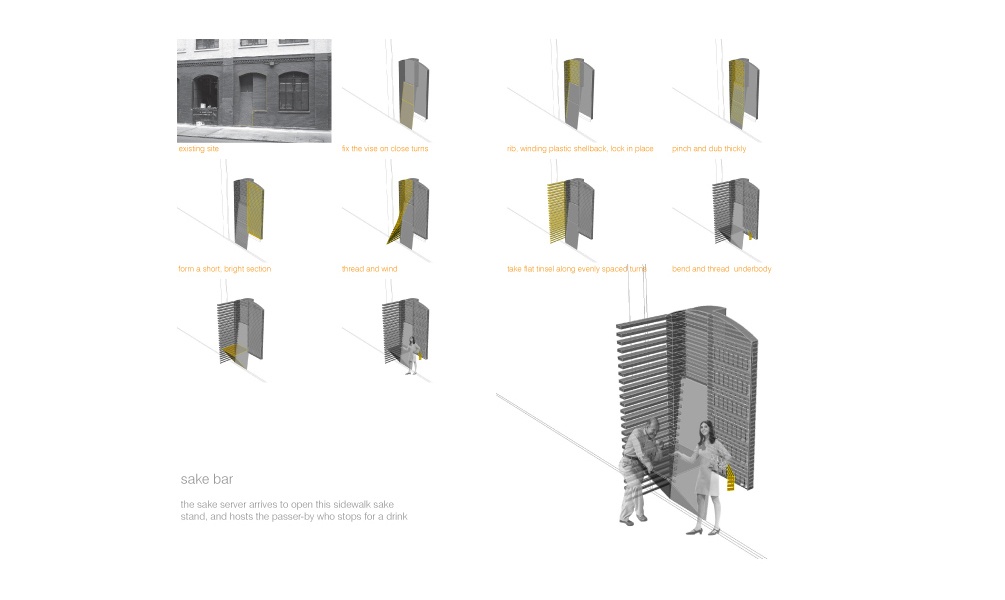tacklebox
constraint and calibration in design
instructions for fly-tying are filtered in order to create an intentional misreading of the text that serves as a framework within which to design.
the constraint is tested through a series of four projects. each begins with a spatially constrained site and a chosen fly. this initial design process is further challenged by the introduction of a program entailing a guest/host relationship.
there is a reference to the simple machine "block and tackle" in which you gain force by increasing the number of "blocks" or pulley components that make up a rig for lifting. similarly, if you carefully calibrate the design process with a set of given or self-imposed constraints, you may collectively circumvent any blinding preconceptions for a given project.
there is also this notion of "tackling" the ubiquitous "white box" projects and "left over" or "in-between" spaces that are increasingly common design commissions for an architecture practice in new york. as we continue to develop our practice, our "tacklebox" has become a metaphorical box of core design principles that we carry with us and continually calibrate from one project to the next.





